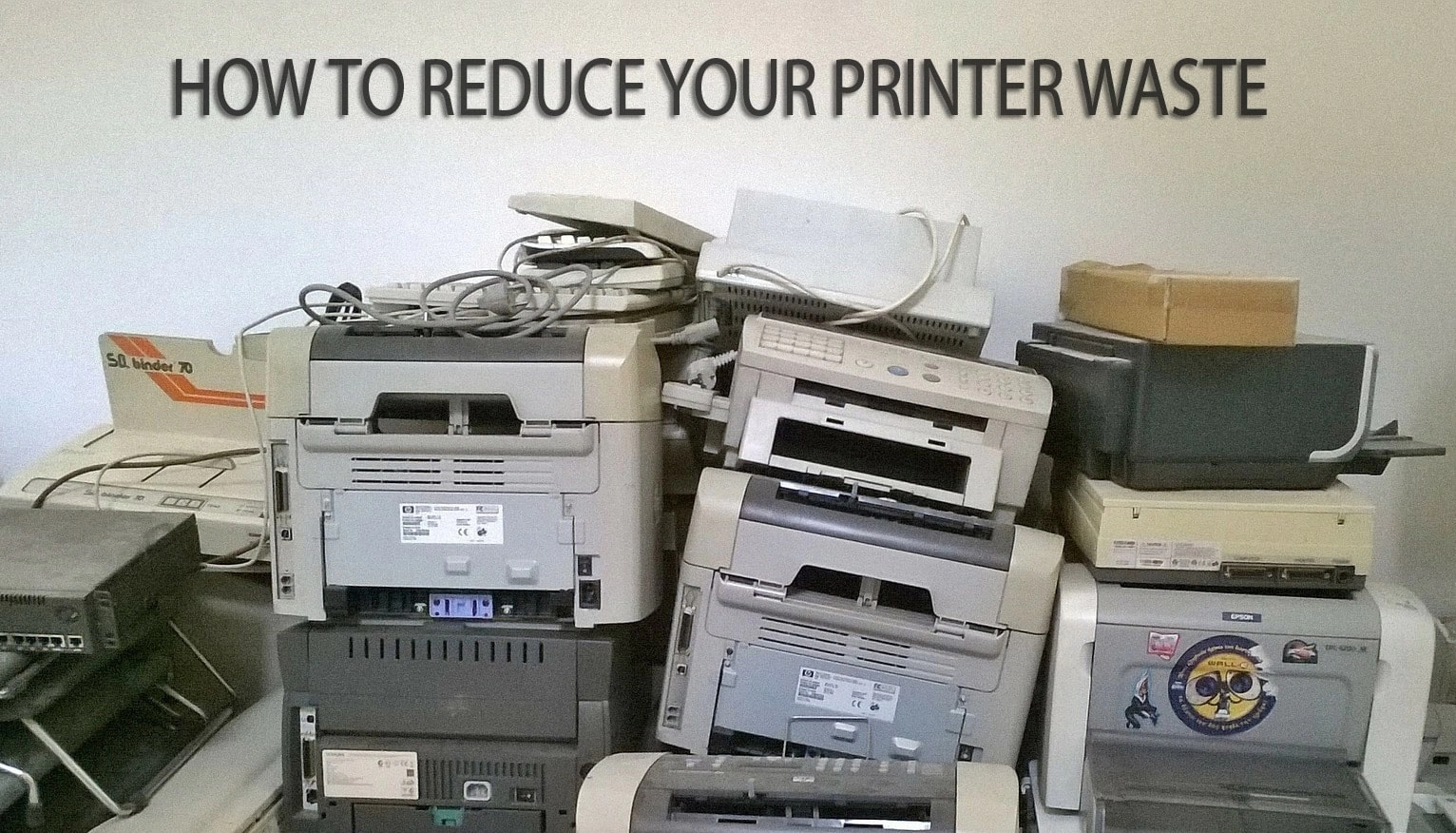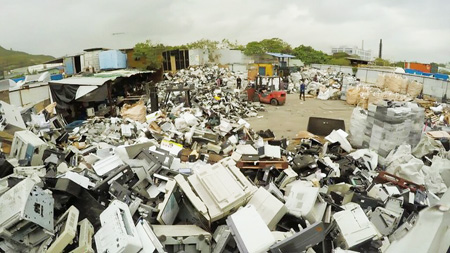How to Minimize Printer wastage : Printer, Paper, Cartridges and Power consumption
Posted on Monday 01 July, 2019 
Most of the waste associated with home and small business computing relates to the use of printers. Here are some steps you can take to minimise your footprint.
Scrap Paper
The obvious way to reduce printer waste is to simply print less. If you don't really need a hard copy of a document, then don't make one.
We're not suggesting you can completely eliminate printing. There are still times when a letter carries more weight than an email. Some people still expect to receive physical invoices and receipts. An A4 printout of a complex schedule is a lot easier to use than trying to read the same document on the small screen of a smartphone.
So the message is not "don't print," but rather "print mindfully."
Beyond that, adopting double-sided printing can significantly reduce the amount of paper you get through. It won't halve your consumption because documents are often just one page, and there are times when double-sided output simply isn't appropriate.
Some printers – or perhaps more accurately their drivers – let you set double-sided printing as the default. It can also be helpful to prepare two or more presets (sets of printing parameters) that match the way you work. For example, as a minimum you might have single-sided colour, single-sided greyscale, double-sided, colour, and double-sided greyscale.

While it doesn't actually reduce the amount of waste you produce, purchasing recycled paper and putting scrap paper in the recycling bin does reduce the impact of printing. Compared with virgin paper, the manufacture of recycled paper uses significantly less energy and water. If your past experience with recycled office paper was less than satisfactory, take another look: today's recycled papers are almost indistinguishable from those made from virgin pulp.
Documents that contain sensitive information should be shredded before disposal. If you use a commercial shredding service, there's nothing else for you to do. But if you have so little that you can do your own shredding, contact your local council to check that shredded paper is accepted for kerbside recycling. For instance, it is OK to put shredded paper into the recycling bin in the City of Kingston, the City of Greater Geelong takes it as long as it is in a paper bag, envelope or cardboard box, but the ACT Government says "The dreaded shredded paper does not belong in the recycling bin. It clogs the machinery and contaminates other recycling." Some waste transfer stations have specific receptacles for shredded paper, and paper is often on the 'no charge' list.
Cartridge waste
Another significant type of waste associated with printers is ink cartridges and toner cartridges.
Some people like to do their own refilling, but this can be a messy business with uncertain results.
Using commercially refilled cartridges avoids the mess, but there can be quality issues.
The difference between refilled and remanufactured cartridges is that the latter have been dismantled and any worn or damaged parts replaced during the reassembly and refilling process.

Whether you choose to use remanufactured cartridges, compatible cartridges or genuine cartridges, please don't throw them away when they are empty. The Cartridges 4 Planet Ark program operates in collaboration with Brother, Canon, Epson, HP, Konica Minolta and Kyocera to return cartridges for remanufacturing and recycling.
If your organisation uses at least three ink or toner cartridges a month, consider registering for a free Cartridges 4 Planet Ark collection box. When the box is full, the contents can be returned by using the Reply Paid (Australia Post) sticker provided.
Smaller quantities can be dropped into the Planet Ark collection boxes at any Officeworks store, or participating Australia Post, The Good Guys, JB Hi-Fi, Harvey Norman, Office National and Office Products Depot outlets. Find your nearest one here.
One way to reduce the number of ink or toner cartridges you get through is to use the printer's draft mode where appropriate. This uses less ink or toner, so the cartridges last longer.
And if your printer is one that was designed to be refilled with ink or toner from bottles, you'll generate even less waste. If the bottles aren't suitable for kerbside recycling they can go in the Planet Ark box.
Power
An invisible form of waste is the excessive use of electricity.
Laser printers use more electricity than inkjets do, largely because high temperatures are needed to fuse the toner onto the paper. So their peak consumption can be 200W or more, at least ten times that of typical inkjets.
Modern printers are generally quite aggressive in terms of dropping back to low-power standby modes in order to save electricity. Even in the lowest-power mode some electricity is being used, so it's tempting to switch off at the wall if the printer is not going to be used for a prolonged period.
But that can be a false economy, especially with inkjet printers. A significant amount of ink is used every time the printer is switched on, and the cost of the ink is likely to be greater than the cost of the electricity saved.
Printers typically consume around 1W or less in sleep mode. If you pay 30c per kilowatt-hour (kWh), switching off at the wall can't save you more than $2.65 a year.
If you really do need to power-down an inkjet printer, don't just flick the wall switch! Use the printer's on/off switch first, wait for it to shut down completely, and only then disconnect from the mains. This process allows the mechanism to correctly park the printhead, reducing the risk that it will dry out and become clogged.
End of life
The printer itself eventually becomes waste.
A problem with lower-end printers – as with so many other types of product – is that almost any out-of-warranty repair is uneconomical, so if something does go wrong the best course of action is to buy a new one. There's not much we, as individuals and small businesses, can do about that, apart from looking for printers that come with longer warranties. One year is typical for cheaper models, but some Epson printers, for example, are guaranteed for two years if registered promptly after purchase.

More expensive models, such as some of the Kyocera range, may come with a two year warranty, and are often designed with durability and serviceability in mind.
When your printer does reaches the end of its useful life, don't forget that it is covered by the National Television and Computer Recycling Scheme, so you can leave it an a participating drop-off point and be assured it will be correctly processed.
Four organisations operate under the scheme, and you can find your nearest drop-off point by clicking these links: TechCollect, E-cycle Solutions and Drop Zone . These locations variously include waste transfer stations, commercial recyclers, and stores such as Harvey Norman, The Good Guys and Officeworks.





Any comments?